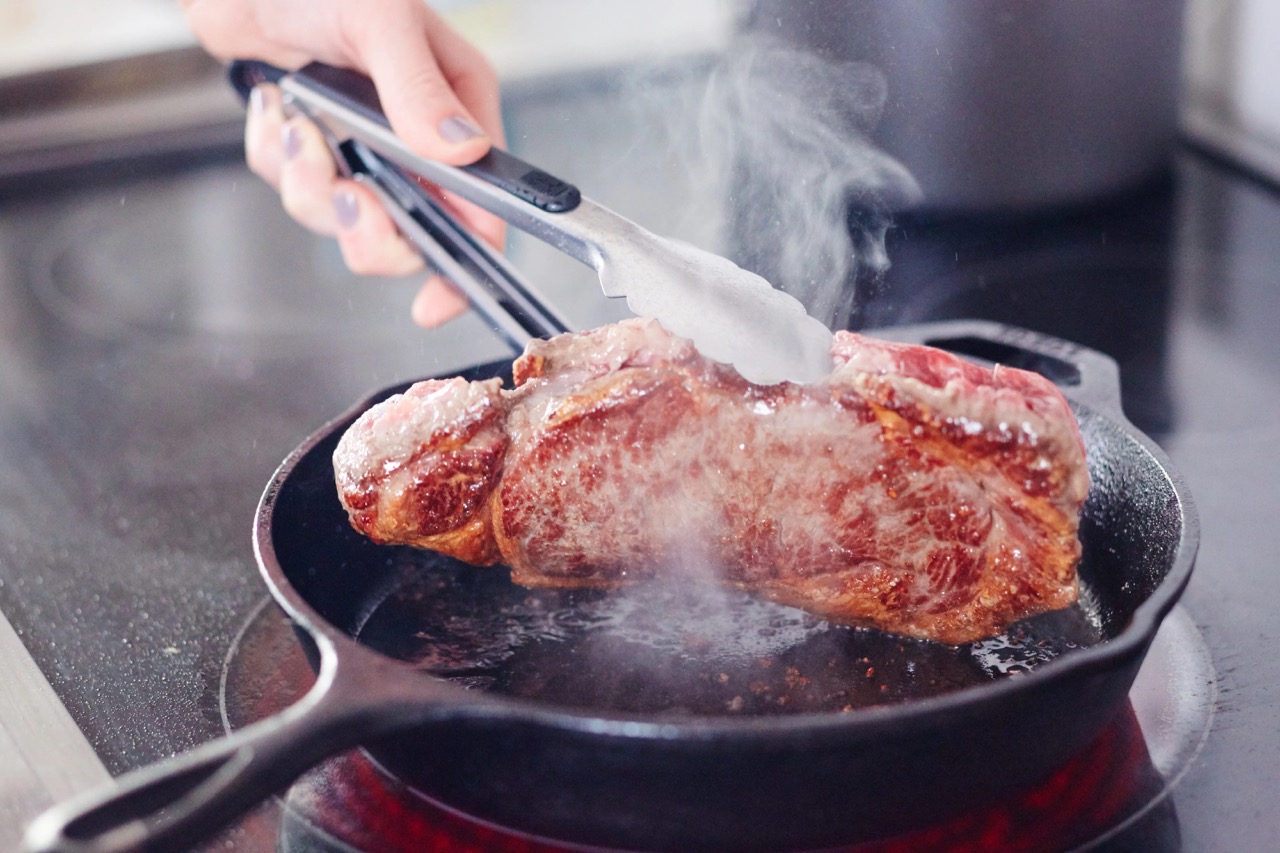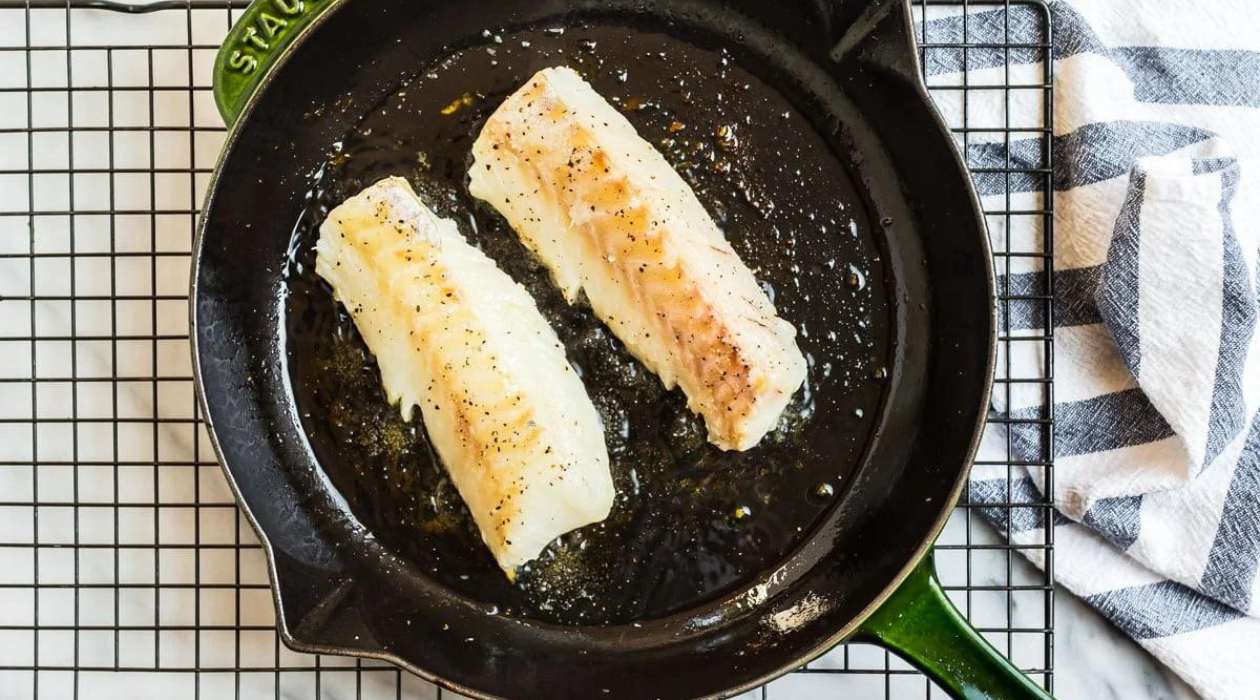

Articles
How To Cook Bacon On Stove Top
Modified: December 7, 2023
Discover the best techniques for cooking bacon on a stove top. Read our informative articles and become a bacon connoisseur.
(Many of the links in this article redirect to a specific reviewed product. Your purchase of these products through affiliate links helps to generate commission for Storables.com, at no extra cost. Learn more)
Introduction
When it comes to cooking bacon, there are various methods you can choose from. One popular option is cooking bacon on the stovetop. Not only is this method quick and convenient, but it also allows you to achieve crispy and delicious bacon slices.
In this article, we will guide you through the process of cooking bacon on the stovetop, providing you with step-by-step instructions on how to achieve perfect results every time. So, grab your frying pan and get ready to elevate your bacon game!
Before we dive into the cooking process, it’s important to mention that cooking bacon can result in hot splatters of grease. To ensure your safety, always exercise caution when working with hot oil and use appropriate protective measures, such as wearing oven mitts or using a splatter guard.
Now, let’s gather the necessary equipment and get started!
Key Takeaways:
- Master the art of cooking crispy and delicious bacon on the stovetop with these step-by-step instructions. Elevate your bacon game and impress your friends and family with your newfound bacon-cooking skills.
- Ensure safety and achieve perfect results every time by following the essential equipment and steps for preparing, cooking, and serving crispy bacon. Enjoy the smoky, savory flavors and savor the delicious results.
Read more: How To Bake On The Stove Top
Equipment Needed
Before you start cooking bacon on the stovetop, it’s important to have the right equipment on hand. Here are the essential items you’ll need:
- A frying pan or skillet: Choose a pan that is large enough to fit the desired amount of bacon. A pan with a non-stick surface is recommended for easy cleanup.
- Tongs or a spatula: These tools will help you turn and handle the bacon safely without getting burned.
- Paper towels: This will be used to drain excess grease from the cooked bacon.
- Heat-resistant gloves or oven mitts: These will protect your hands from hot splatters and heat.
- Splatter guard (optional): If you want to minimize the mess and reduce the risk of grease splatters, consider using a splatter guard.
Once you have gathered these items, you are ready to move on to the next step: preparing the bacon.
Step 1: Preparing the Bacon
Before you start cooking the bacon, it’s important to properly prepare it. Follow these steps:
- Remove the bacon from its packaging: Take the bacon out of its plastic wrap or container.
- Separate the bacon slices: Gently pull apart the individual slices of bacon, ensuring they are not sticking together.
- Trim excess fat (optional): If desired, you can trim any excessive fat from the bacon slices. This step is a matter of personal preference and can help reduce the overall grease content.
Once you have prepared the bacon, it’s time to move on to the next step: heating the pan.
Step 2: Heating the Pan
Now that you have prepared the bacon, it’s time to heat the frying pan or skillet. Follow these steps:
- Place the frying pan on the stovetop: Select a burner on your stovetop and place the frying pan on top.
- Turn on the heat: Turn the burner to medium heat and allow the pan to heat up for a couple of minutes. Preheating the pan ensures even cooking and prevents the bacon from sticking.
Once the pan is adequately heated, it’s time to move on to the next step: cooking the bacon.
Step 3: Cooking the Bacon
Now that the pan is heated, it’s time to start cooking the bacon. Follow these steps:
- Place the bacon slices in the pan: Carefully lay the bacon slices in a single layer in the heated pan. Make sure each slice has enough space between them to cook evenly.
- Cook one side: Allow the bacon to cook on one side for about 4-5 minutes or until it starts to turn crispy and brown. The cooking time may vary depending on the thickness of the bacon and your desired level of crispiness.
- Keep an eye on the heat: While the bacon is cooking, monitor the heat and adjust it as needed. If the bacon is sizzling too rapidly or starting to burn, reduce the heat slightly. If the bacon is not cooking fast enough, increase the heat slightly.
Now that the bacon is cooking, it’s time to move on to the next step: flipping the bacon.
Use a cast iron skillet for even cooking. Start with a cold pan, lay the bacon strips in a single layer, and cook over medium heat, flipping occasionally, until desired crispiness. Drain on paper towels.
Read more: How To Cook Chili On Stove Top
Step 4: Flipping the Bacon
Once the bacon has cooked on one side and reached your desired level of crispiness, it’s time to flip it. Follow these steps:
- Use tongs or a spatula: Gently lift each bacon slice using tongs or a spatula to avoid any potential splatters.
- Flip the bacon: Carefully flip each bacon slice to the other side, ensuring it cooks evenly on both sides.
- Cook the other side: Allow the bacon to cook for another 4-5 minutes or until it reaches your preferred level of crispiness.
While flipping the bacon, it’s important to be cautious to prevent any hot grease splatters. Once you have successfully flipped the bacon, it’s time to move on to the next step: removing the bacon from the pan.
Step 5: Removing the Bacon from the Pan
Now that the bacon is cooked to perfection, it’s time to remove it from the pan. Follow these steps:
- Turn off the heat: Before removing the bacon, turn off the stove and ensure the burner is no longer producing heat.
- Use tongs or a spatula: Carefully lift each bacon slice using tongs or a spatula and transfer it to a paper towel-lined plate or tray. The paper towels will help absorb any excess grease.
- Pat with paper towels: Gently pat the top of the bacon slices with additional paper towels to remove any remaining grease.
Once you have removed the bacon from the pan and drained any excess grease, it’s time to move on to the next step: serving and enjoying your delicious bacon!
Step 6: Draining the Bacon
After removing the bacon from the pan, it’s important to drain any excess grease to ensure a crispy and delicious final result. Follow these steps:
- Transfer to a paper towel-lined plate: Place the cooked bacon slices onto a plate lined with paper towels. The paper towels will help absorb and collect any residual grease.
- Pat gently with paper towels: Take a few more sheets of paper towels and gently dab the top of the bacon slices to remove any remaining grease. Be careful not to press too hard and flatten the bacon.
- Discard the used paper towels: Once you have absorbed the excess grease, carefully dispose of the used paper towels. Remember to handle them with caution, as they may still be greasy and hot.
By draining the bacon properly, you can ensure a perfect balance of crispiness and flavor. Now that you have completed this step, it’s time to move on to the final step: serving and enjoying your deliciously cooked bacon!
Step 7: Serving and Enjoying
Congratulations! You have successfully cooked bacon on the stovetop. Now it’s time to savor the delicious results. Follow these steps to serve and enjoy your perfectly cooked bacon:
- Transfer to a serving platter: Carefully transfer the drained bacon slices from the paper towel-lined plate to a serving platter or individual plates.
- Garnish (optional): If desired, you can garnish the bacon with a sprinkle of freshly ground black pepper, chopped parsley, or a drizzle of maple syrup for added flavor.
- Serve with your favorite accompaniments: Bacon pairs well with a variety of dishes. Consider serving it alongside scrambled eggs, as a filling for sandwiches or burgers, or as a topping for salads or loaded baked potatoes.
- Enjoy your crispy bacon: Now it’s time to dig in! Bite into the crispy bacon slices and savor the smoky, savory flavors.
Remember, cooked bacon should be consumed fresh. If you have any leftovers, store them in an airtight container in the refrigerator and consume within a few days. Reheat the leftover bacon in the microwave or on a stovetop for a quick and delicious addition to your meals.
That’s it! You’ve mastered the art of cooking bacon on the stovetop. Enjoy your delicious creation and impress your friends and family with your newfound bacon-cooking skills.
Frequently Asked Questions about How To Cook Bacon On Stove Top
Was this page helpful?
At Storables.com, we guarantee accurate and reliable information. Our content, validated by Expert Board Contributors, is crafted following stringent Editorial Policies. We're committed to providing you with well-researched, expert-backed insights for all your informational needs.















0 thoughts on “How To Cook Bacon On Stove Top”